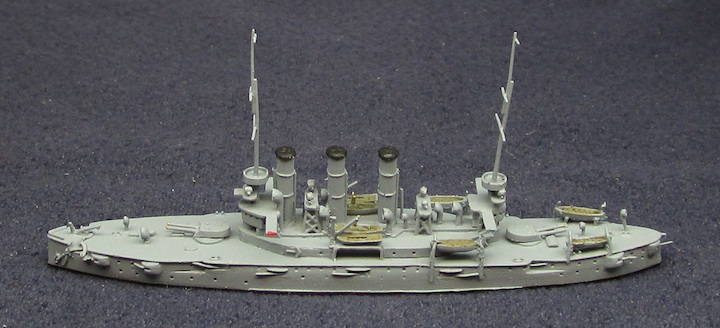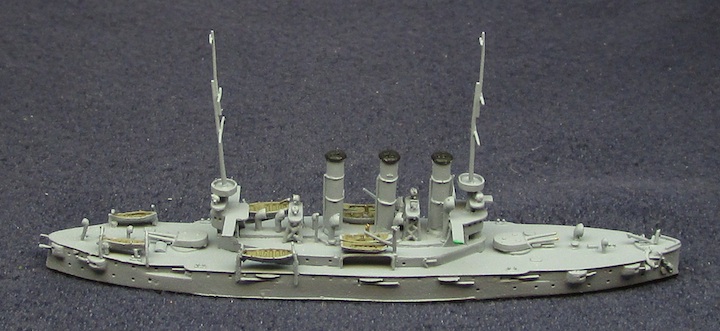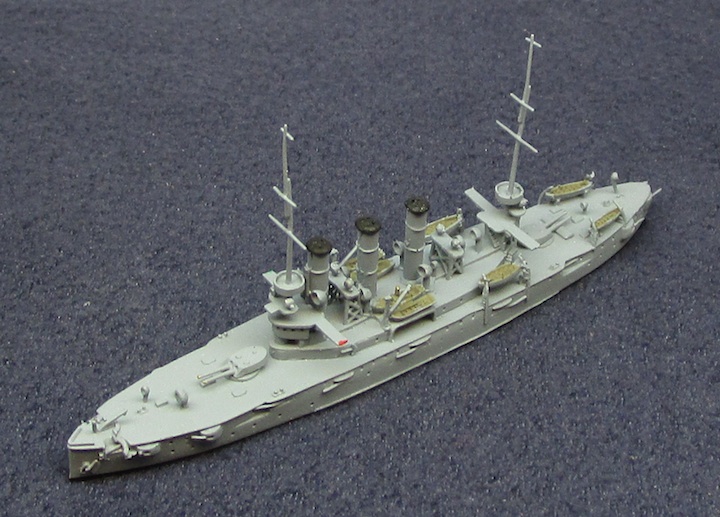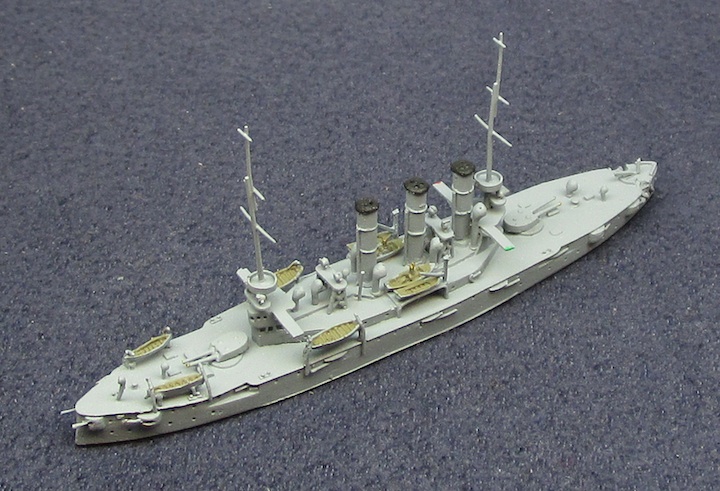U.S.S. Saratoga
CA-2

1911
(Saratoga Model Shipyard SMY-14a)
- Class: Saratoga - 1 armoured cruiser of 1888
- Displacement: 8,200 tons
- Dimensions: 384' x 64'10" x 23'3"
- Machinery: twin screw, 4 vertical triple-expansion, S.H.P. 17,401 = 21 knots
- Armor: 4" (sides), 5.5" (turrets)
- Armament: 4-8"/35 (2x2), 10-5"/50 (10x1), 8-3"/50 (8x1)
- Complement: 515
- Builder: William Cramp & Sons, Philadelphia, PA
- Authorized: 7 Sep 1888
- Laid down 19 Sep 1890
- Launched: 2 Dec 1891
- Commissioned: 1 Aug 1893
- Renamed: Saratoga 16 Feb 1911
- Renamed: Rochester 1 Dec 1917
- Reclassified: CA-2 17 Jul 1920
- Decommissioned: 29 Apr 1933
- Stricken: 28 October 1938
- Scuttled: in Subic Bay, 24 Dec 1941
- Service: Built as armored cruiser USS New York, designated ACR-2. After commissioning she served with both the South Atlantic and North Atlantic Squadrons. Joined the European Squadron in 1895 and represented the US at the opening of the Kiel Canal. Served as flagship of Rear Admiral William T. Sampson at the Battle of Santiago, 3 Jul 1898, during the Spanish-American War. Transferred to the Asiatic Fleet in 1901 and the Pacific Squadron in 1903 before returning to Boston to decommission in 1905 for modernization. Recommissioned in 1909 as shown here, she served in the Atlantic and then rejoined the Asiatic Fleet in 1910. She was renamed USS Saratoga in 1911 to make the state name available for the new battleship USS New York, BB-34.
Saratoga stayed in the Far East until 1916, when she returned to Bremerton and went into reduced commission with the Pacific Reserve Fleet. As the US neared participation in World War I, she returned to full commission in 1917 and joined the Pacific Patrol Force. In Nov 1917 she transited the Panama Canal and rejoined the Atlantic Fleet at Hampton Roads, where she was renamed USS Rochester to free up her name for the new battlecruiser USS Saratoga, CC-3. She carried out both convoy and training duties, and after the Armistice in 1918, served as a transport bringing troops home.
In 1919 she served as flagship of the destroyer squadron acting as plane guards for the transatlantic flight of Navy Curtiss NC seaplanes. In 1920 she was received the new type designation CA-2. She continued to serve in the Atlantic, Caribbean, and South American areas until 1932 when she returned to the Pacific. She served on the China station until sailing to Cavite in the Philippines to decommission in 1933 after 40 years' service. She was moored at the Olongapo Shipyard in Subic Bay for the next eight years, and was scuttled 24 Dec 1941 to prevent her capture by the invading Japanese.



 Up
Up





 Up
Up